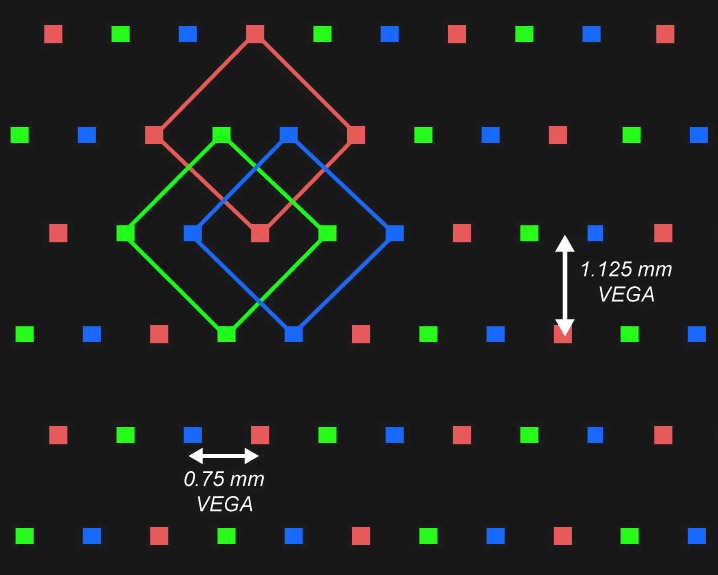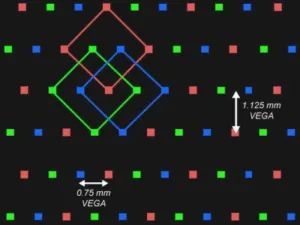Up to now, only Silicon Core, with its patented common cathode drive technology, has been able to provide small pitch LEDs at high brightness of up to 2,000 cd/m². Other brands and suppliers have been limited to around 1,000 cd/m² or less. Now that has changed with new LEDs from a company called Deepsky Corporation that is based in Hong Kong, and established in 2012, but has already won projects in France (Monaco and Paris) that will be installed from April.
At the show, Deepsky was showing a 0.93mm pitch LED display (Vega) that was said to be producing 2,300 cd/m², with up to 5,000 cd/m² of brightness said to be available. The company has also developed 1.40mm (Altair) and 1.87mm (Deneb) displays. Each range is available as “Pro” with up to 2,300 cd/m² of output or “Extreme”, with up to 5,000 cd/m².
Deepsky told us that it has “three tricks” to boost brightness and its own driving technology (based on its own ASIC) is key to this. First, the company said that its multiplex frequency is different to others (we think it’s slower that the LEDs are on for longer). Secondly, it claims to be able to use its driving to influence the chromaticity of its LEDs. That means that it doesn’t have to accept LEDs that are binned for efficiency and colour, but can buy LEDs that are optimised for efficiency, which helps to get the high brightness. Finally, the company has some unique light extraction technology to get the photons out of the device.
The company is supplying via indirect sales through integrators and the modules are designed to be easily “pulled” for repair and maintenance.
Analyst Comment
Deepsky would not let us take close-up photos of its small LED tiles, which were just a few inches square and had a “castellated” edge so that the tiles effectively clipped together. The pixel structure is different from traditional LEDs and that mandates a different physical configuration. The company is using directly-mounted microLEDs (although it would not give details). The surface of the display is smooth and very rugged.
All in all, this was a very impressive debut by Deepsky. Other companies had direct mount LED display samples, but we were sworn to secrecy and when our camera came out, the tiles went back into pockets.

We dug into the background when we got back from ISE and found that there is a “gotcha” in the Deepsky technology. It seems to use a kind of sub-pixel addressing, using multiple LEDs to get the high brightness and high resolution. As a result of this technique, the company recommends the following on its website.
| millimetres | Horizontal Pitch | Vertical Pitch | Pitch for Optimal Resolution | No of LEDs per sq. m. | No of LED triplets per sq. m. | Equivalent RGB Pitch |
| Vega | 0.75mm | 1.125mm | 0.93mm | 1.2M | 395K | 1.6mm |
| Altair | 1.125mm | 1.69mm | 1.40mm | 526K | 175K | 2.4mm |
| Deneb | 1.5mm | 2.25mm | 1.87mm | 296K | 99K | 3.2mm |
The company also says on its website that it is driving each LED separately, rather than RGB all from the same power supply, which usually necessitates a drop resistor on the red LED to cope with differences between red and green and blue. This helps to save power that would otherwise be wasted in the resistor. (BR)

